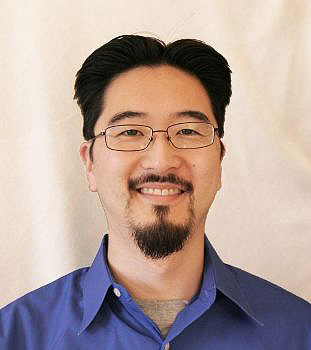After the left ventricle of the heart contracts, it must relax efficiently to prepare to refill and supply the body with blood on the next beat. An increasing number of patients — including nearly all patients with heart failure — suffer from impaired relaxation, part of a clinical syndrome known as diastolic dysfunction. Treatments for impaired relaxation do not exist.
A team of Wayne State University School of Medicine researchers led by Charles Chung, Ph.D., assistant professor of Physiology, recently received a $1,894,271 grant from the National Heart, Lung, and Blood Institute of the National Institutes of Health to address the critical need for new drug targets and diagnostic indexes for diastolic dysfunction using novel biomechanical tests that ultimately can be translated into clinical practice.
Dr. Chung said the project was inspired by his research team’s finding that how quickly the heart’s muscle moves is directly related to how fast the muscle can relax. The project will use unique

experiments and imaging techniques to link mechanical properties of the heart with models of heart failure that occur in patients.
“My lab’s main research focus is to understand how the heart muscle moves at the end of contraction and how this motion can speed up the force decline, or relaxation, of the muscle,” Dr. Chung said. “Major proteins in muscles called myosin, actin and titin control the force of each beat. When the heart muscle contracts, myosin binds to actin to generate force. Our lab is trying to determine if motion — and how fast the motion occurs — makes myosin let go of actin faster and make the muscle relax faster.”
Myosin can also be affected by other proteins like titin, which is not only the largest naturally occurring protein, it acts like a spring or rubber band within the muscle. Using titin with different stiffness levels means the team can determine if a “stiff spring” will enhance how the muscle responds (i.e. how myosin will detach) when it is moved.
To view what these proteins are doing when a muscle moves, the Wayne State team is collaborating with investigators from the Biological Collaborative Access Team, or BioCAT, at Argonne National Laboratories and the Illinois Institute of Technologies. The combined expertise of BioCAT and Dr. Chung’s lab will allow the team to use X-ray diffraction to study how myosin changes position when living and beating heart muscles move.
Dr. Chung’s studies of proteins within the heart muscle might also help patients with diastolic dysfunction.
“We’re working with collaborators in the Department of Internal Medicine at Wayne State, including Luis Afonso, M.D., chief of Cardiology, and Noreen Rossi, M.D., professor of the Division of Nephrology and a researcher at the (John Dingell VA Center),” Dr. Chung said. “Our work will look at how western diet staples like fructose and salt can change the movement of the heart and hinder relaxation. We’re also studying how our laboratory studies might translate to the clinics, where Afonso and Rossi regularly see patients suffering from diastolic dysfunction.”
The grant number for the NIH study, “Leveraging Mechanical Control of Relaxation to Improve Diastolic Function,” is HL151738.